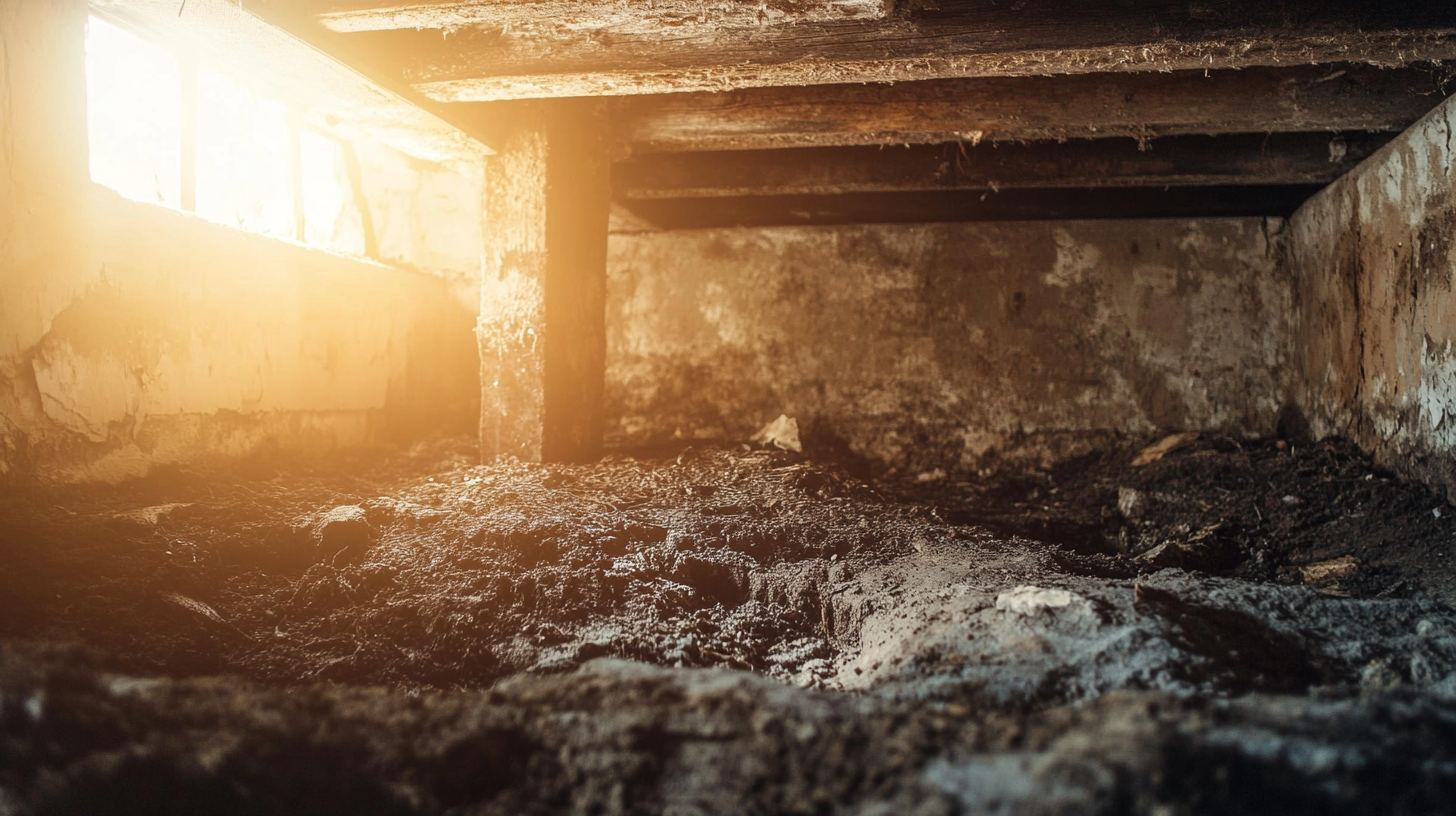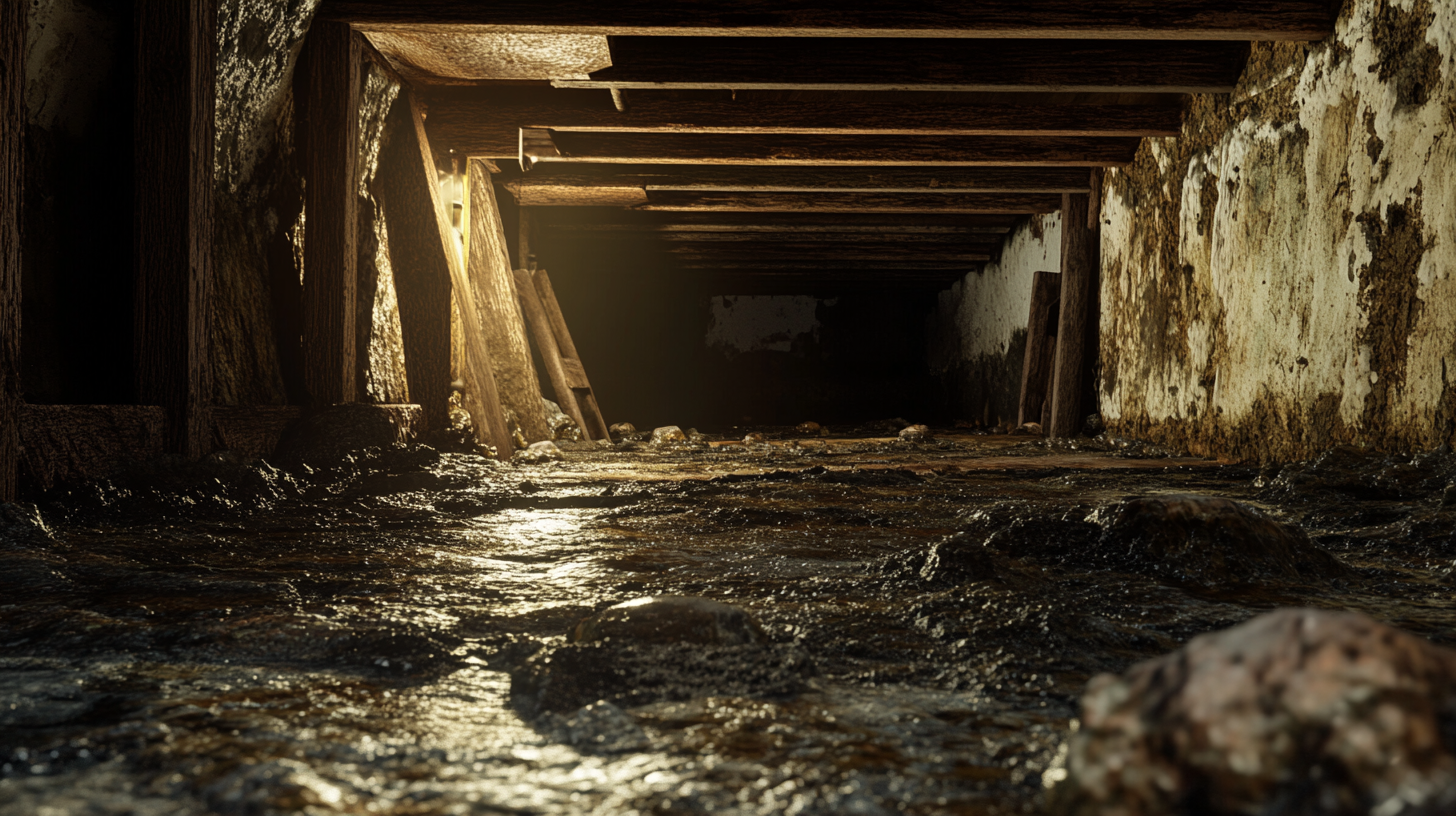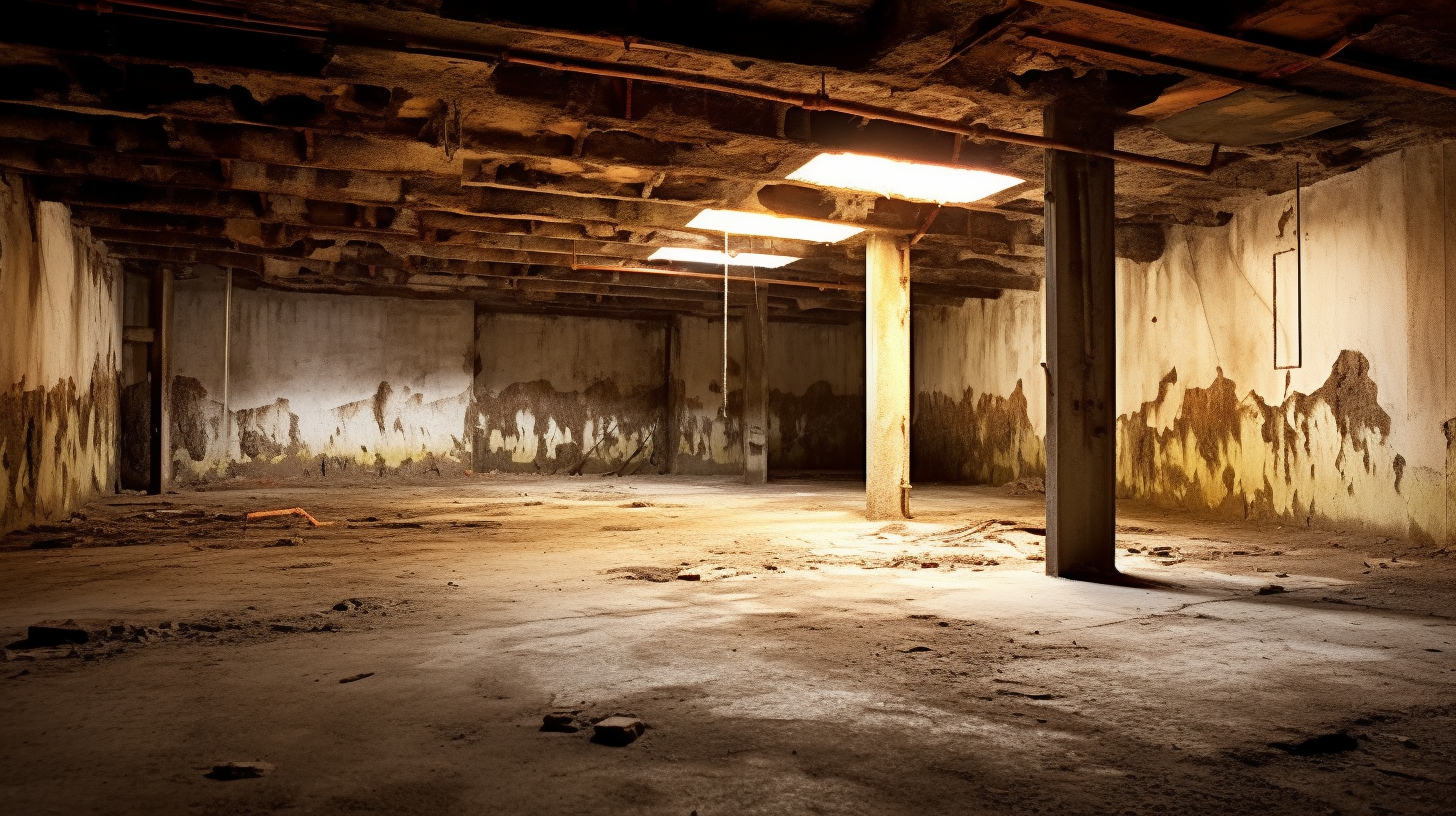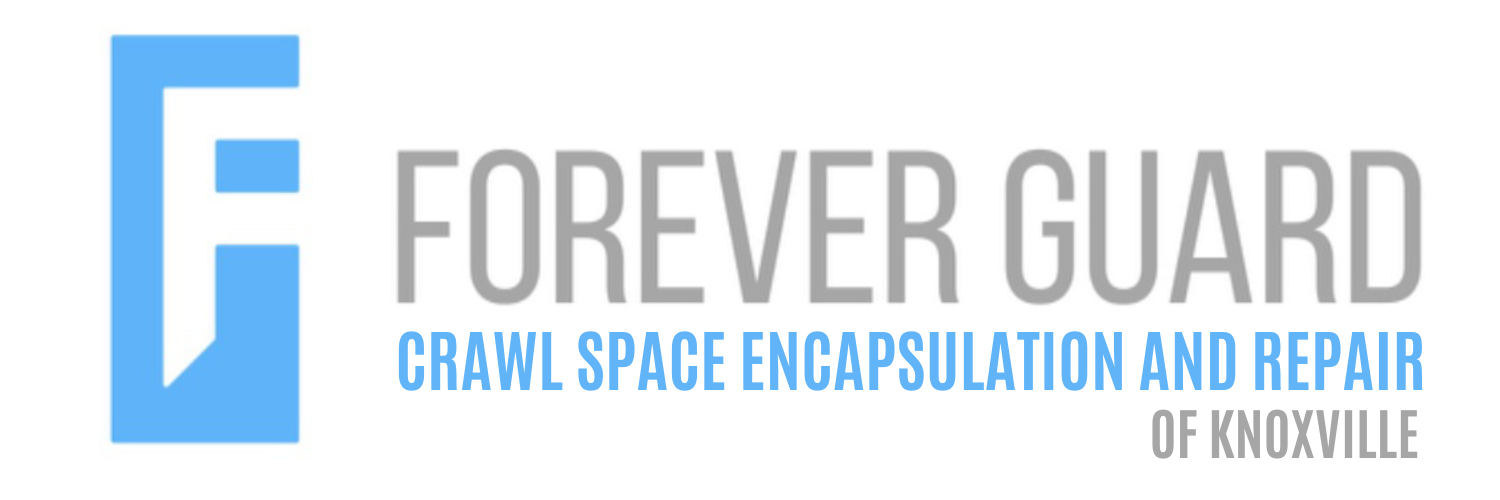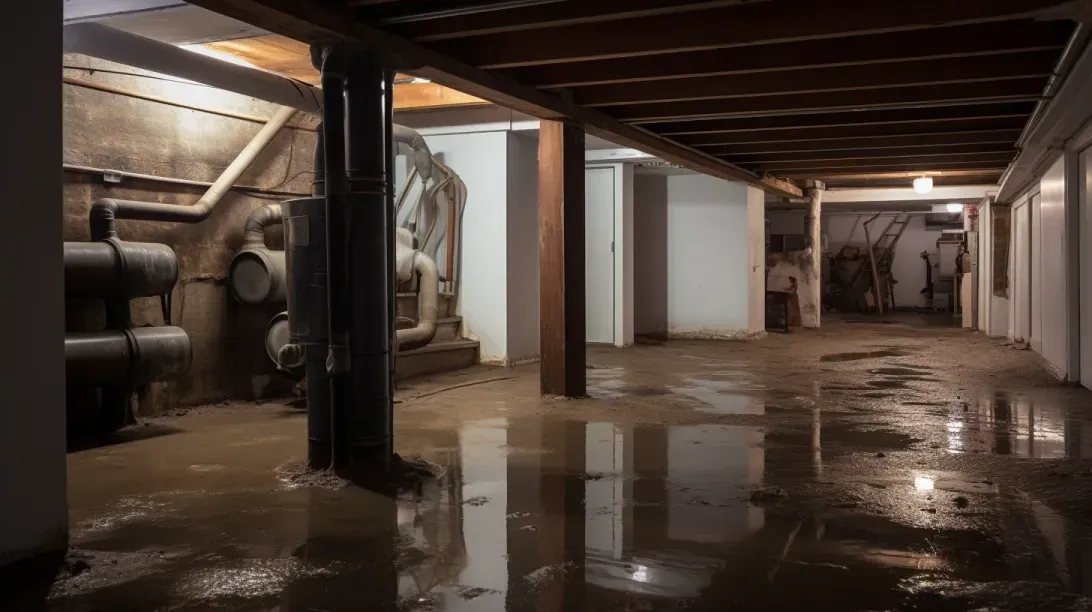Now IS THe Time To...

Crawl Space Services In Knoxville, TN
Stetson Howard: 865-432-6743
CRAWL SPACE ENCAPSULATION, REPAIR, WATERPROOFING & MOLD REMOVAL
No-Obligation, Free Inspections
No-Obligation Free Estimates
We Warranty All of Our Work
100% Satisfaction Guaranteed
Welcome to our comprehensive guide on the critical importance of selecting the right waterproofing materials for your home or building project. The integrity of a structure, its longevity, and the health of its occupants are profoundly influenced by the effectiveness of its waterproofing. This guide is meticulously crafted to illuminate the significance of making informed choices in waterproofing materials, a decision that goes far beyond mere aesthetics or immediate cost considerations.
In this guide, we delve into the myriad of waterproofing materials available in the market, each suited to different conditions and applications. From the robustness of epoxy coatings to the flexibility of polyurethane sealants, understanding the unique properties and appropriate usage of each material is crucial. Our aim is to empower you, whether you are a homeowner seeking to protect your investment or a builder committed to delivering quality constructions, with the knowledge to make choices that ensure long-term protection against water damage.
Waterproofing is not just a technical necessity; it's a critical layer of defense against environmental elements. The right choice of materials can prevent a host of issues, such as structural damage, mold growth, and indoor air quality problems, all of which can have significant health and financial implications. Through this guide, we will provide you with insights into the various waterproofing materials, their pros and cons, application techniques, and tips for both DIY enthusiasts and professionals.
Understanding Waterproofing Materials
The choice of waterproofing materials is a critical decision in construction and home maintenance, directly impacting the longevity and safety of a structure. This section aims to provide a comprehensive understanding of waterproofing materials, their evolution, and the various types available in the market.
Basics of Waterproofing
Explanation of What Waterproofing Is and Its Significance:
Waterproofing refers to the process of making a structure water-resistant or waterproof so that it remains relatively unaffected by water or resisting the ingress of water under specified conditions. This process is essential in protecting buildings from water damage, which can lead to structural weakening, mold growth, and deterioration of building materials. Effective waterproofing is crucial for the durability and safety of any structure, from residential homes to commercial buildings.
Brief History of Waterproofing Materials:
The history of waterproofing dates back to ancient times when natural substances like tar and pitch were used to waterproof boats and ships. Over the centuries, the evolution of waterproofing materials has been significant, with advancements in technology leading to the development of more sophisticated and durable materials. From the use of lead in the Roman era to the modern use of polymers and elastomers, the journey of waterproofing materials reflects a continuous quest for more effective and long-lasting solutions.
Categories of Waterproofing Materials
Listing and Explaining Different Types (e.g., Sealants, Membranes, Coatings):
Sealants: Sealants like silicone, polyurethane, and polysulfide are used to seal joints and openings against water ingress. They are flexible, allowing for movement while maintaining a waterproof seal.
Membranes: Waterproofing membranes come in various forms, including sheet-based (like bituminous and PVC membranes) and liquid-applied membranes. They create a continuous barrier to water and are used in a variety of applications from roofs to foundations.
Coatings: Coatings such as epoxy and acrylic are applied to surfaces to provide a waterproof layer. They are commonly used on concrete surfaces, walls, and floors.
Each category has its specific applications, advantages, and limitations, which are crucial to understand for effective waterproofing. The choice of material depends on factors like the area of application, exposure to elements, structural considerations, and budget.
Factors to Consider When Choosing Waterproofing Materials
Selecting the right waterproofing materials is a decision that requires careful consideration of various factors. This section will guide you through key considerations to ensure that your choice not only suits your immediate needs but also stands the test of time and environmental conditions.
Type of Structure
Considerations for Residential vs. Commercial Buildings:
The choice of waterproofing materials can differ significantly between residential and commercial buildings. Commercial buildings often have different structural designs and may be subject to heavier usage or different regulatory standards, necessitating more robust waterproofing solutions. Residential buildings, on the other hand, might prioritize aesthetics and cost-effectiveness alongside functionality.
Special Considerations for Basements, Roofs, Bathrooms, etc.:
Different areas of a building have unique waterproofing needs:
- Basements: Being below ground level, basements are particularly susceptible to water ingress and require durable, high-performance waterproofing solutions.
- Roofs: Roof waterproofing must be able to withstand exposure to sunlight, temperature variations, and possibly heavy foot traffic.
- Bathrooms: In areas like bathrooms, waterproofing materials need to resist constant humidity and direct water contact.
Environmental Conditions
Impact of Climate and Weather Patterns:
The local climate plays a crucial role in the selection of waterproofing materials. Materials that are ideal in a cold, wet climate may not be suitable in a hot, dry climate. Understanding the weather patterns and environmental conditions of your area is essential for making an informed decision.
Dealing with Specific Challenges like High Humidity or Heavy Rainfall:
In areas with high humidity or heavy rainfall, waterproofing materials need to be highly resistant to water penetration and capable of handling large volumes of water. Specialized materials or additional protective layers might be necessary in these conditions.
Durability and Longevity
Discussion on Lifespan of Different Materials:
The lifespan of waterproofing materials varies widely. Some materials may offer a quick fix but require frequent reapplications, while others, though more costly upfront, provide a longer-lasting solution. Understanding the expected lifespan of each material is crucial for long-term planning and budgeting.
Cost vs. Quality Considerations:
While cost is an important factor, it should not be the sole consideration. Investing in higher-quality materials can result in greater durability and less frequent need for repairs, offering better value in the long run. Balancing cost with quality, and considering the long-term implications of your choice, is key to effective waterproofing.
Types of Waterproofing Materials
Choosing the right waterproofing materials is crucial for the protection and longevity of any structure. This section provides an overview of various types of waterproofing materials, their compositions, applications, and limitations, helping you make an informed decision based on your specific needs.
Liquid Waterproofing Membrane
Composition and Application:
Liquid waterproofing membranes are a popular choice for many waterproofing applications. These are typically polymer-based coatings that can be applied to surfaces like a paint. They form a seamless, flexible membrane upon drying, which is ideal for areas that require waterproofing but also might experience some movement or expansion.
Ideal Use Cases and Limitations:
Liquid membranes are particularly effective for waterproofing complex shapes and areas with many angles, such as roofs, balconies, and bathrooms. However, their effectiveness can be limited in areas with heavy water flow or where sharp objects might puncture the membrane.
Sheet Membranes
Types (e.g., Bituminous, PVC, TPO):
Sheet membranes come in various types, including bituminous, PVC (Polyvinyl Chloride), and TPO (Thermoplastic Olefin). Each type has its unique properties: bituminous sheets are known for their durability, PVC sheets for their flexibility, and TPO sheets for being environmentally friendly and heat-reflective.
Installation Process and Where They Are Best Used:
Sheet membranes are typically rolled out and adhered or welded onto surfaces. They are commonly used in large, flat areas like commercial roofs. The installation process requires precision and often professional expertise, as improper installation can lead to leaks and failures.
Cementitious Waterproofing
Composition and Benefits:
Cementitious waterproofing materials consist of a mix of cement, sand, and a waterproofing agent. This type of waterproofing is known for its rigidity and resistance to abrasion, making it ideal for areas that require a hard-wearing surface.
Common Applications and Limitations:
Cementitious waterproofing is commonly used in areas like internal wet areas (bathrooms and kitchens) and water tanks. While it is durable and easy to apply, its rigidity means it is not suitable for areas that might experience movement or expansion.
Waterproofing Paints and Sealants
Varieties and Their Specific Uses:
Waterproofing paints and sealants, such as acrylic, silicone, and polyurethane, are used for a variety of applications. Acrylic is suitable for surfaces that require a breathable coating, silicone is used for its flexibility and weather resistance, and polyurethane is known for its strength and versatility.
Tips for Application and Maintenance:
Proper application is key to the effectiveness of these materials. Surface preparation, such as cleaning and priming, is crucial. Follow the manufacturer's instructions for application and drying times. Regular maintenance, including inspections and touch-ups, can extend the life of the waterproofing.
DIY Waterproofing vs. Professional Installation
Deciding between DIY waterproofing and professional installation is a critical choice that can significantly impact the effectiveness of the waterproofing and the long-term integrity of your property. This section explores the considerations for DIY waterproofing and the advantages of professional installation, helping you make an informed decision.
DIY Waterproofing Considerations
When is DIY Appropriate?
DIY waterproofing can be a viable option for minor projects like sealing small cracks or applying waterproof coatings in small areas. It's most appropriate when the project is straightforward, the area to be waterproofed is easily accessible, and the risk of significant water damage is low.
Necessary Tools and Skills:
To successfully undertake a DIY waterproofing project, you'll need specific tools and materials, such as sealants, waterproofing paint, brushes, rollers, and possibly a caulking gun. Additionally, a basic understanding of waterproofing techniques and the ability to identify potential problem areas is crucial. DIYers should also be comfortable following product instructions and safety guidelines closely.
Hiring a Professional
Advantages of Professional Installation:
Professional waterproofing offers several key advantages:
- Expertise and Experience: Professionals bring a level of expertise and experience that is crucial for complex or large-scale waterproofing projects. They can identify potential issues and provide solutions that might not be apparent to a DIYer.
- Quality and Durability: Professional installation often means a higher quality job that will last longer, reducing the need for frequent repairs or reapplications.
- Warranty and Peace of Mind: Many professional waterproofing services come with a warranty, offering peace of mind that the job is covered should any issues arise.
How to Choose a Reliable Contractor:
Choosing the right contractor is essential. Look for licensed, insured, and experienced professionals with good reviews or recommendations. Ask for detailed quotes and check references to ensure their previous work meets your standards. A reliable contractor should be transparent about their methods, materials, and the expected timeline and cost of the project
Maintenance and Care of Waterproofing Materials
Proper maintenance and care are crucial for ensuring the longevity and effectiveness of waterproofing materials. This section will guide you through regular maintenance practices and long-term care considerations, helping you preserve the integrity of your waterproofing system.
Regular Maintenance Tips
Routine Checks for Leaks and Damage:
Regular inspections are key to maintaining the effectiveness of waterproofing materials. This includes checking for any signs of leaks, such as water stains, dampness, or mold growth, particularly after heavy rains or in known problem areas like basements and bathrooms. Also, look for physical damage to waterproofing layers, such as cracks, peeling, or bubbling.
Best Practices for Maintaining Different Types of Materials:
Different waterproofing materials require different maintenance approaches:
- Sealants and Coatings: Regularly check for cracks or deterioration and reapply as necessary.
- Membranes: Inspect for punctures or separations, especially at seams and junctions.
- Cementitious Waterproofing: Look for signs of wear or erosion and patch any areas where the cementitious layer has thinned.
Long-Term Care and Replacement
Signs that Waterproofing Materials Need Replacement:
Over time, all waterproofing materials will degrade. Signs that indicate the need for replacement include persistent dampness, the reoccurrence of mold or mildew, and visible deterioration of the material itself. If leaks become frequent or more severe, it's likely time for a replacement.
Upgrading Your Waterproofing System:
Advancements in waterproofing technology mean that newer, more effective solutions are often available. If your waterproofing system is outdated or continually failing, consider upgrading to a more advanced system. This could involve switching to a different type of material or adding additional layers of protection.
Safety Precautions During Maintenance and Installation:
Safety should always be a priority when maintaining or installing waterproofing materials. This includes using the proper protective equipment, following manufacturer instructions for application, and being aware of potential hazards, such as toxic fumes from certain materials or the risk of falls when working at heights.
As we conclude our comprehensive guide on selecting the right waterproofing materials, let's recap the key points that are crucial in making an informed decision:
Understand the Specific Needs of Your Structure: Whether it's a residential building or a commercial property, the type of structure significantly influences the choice of waterproofing materials.
Consider the Environmental Conditions: The local climate and environmental challenges, such as high humidity or heavy rainfall, play a pivotal role in determining the most suitable waterproofing solution.
Evaluate the Durability and Longevity: Assess the lifespan and long-term effectiveness of different waterproofing materials. Remember, a material's resistance to wear and environmental factors is as important as its initial effectiveness.
Factor in the Maintenance Requirements: Consider the ease of maintenance and the frequency of required upkeep for each type of material. Regular maintenance is key to ensuring the longevity of the waterproofing.
Stay Informed About Legal and Safety Aspects: Adherence to building codes and safety regulations is non-negotiable. Ensure that the materials and methods used comply with local standards.
FAQs
Recent Blog Posts
Crawl Space News
